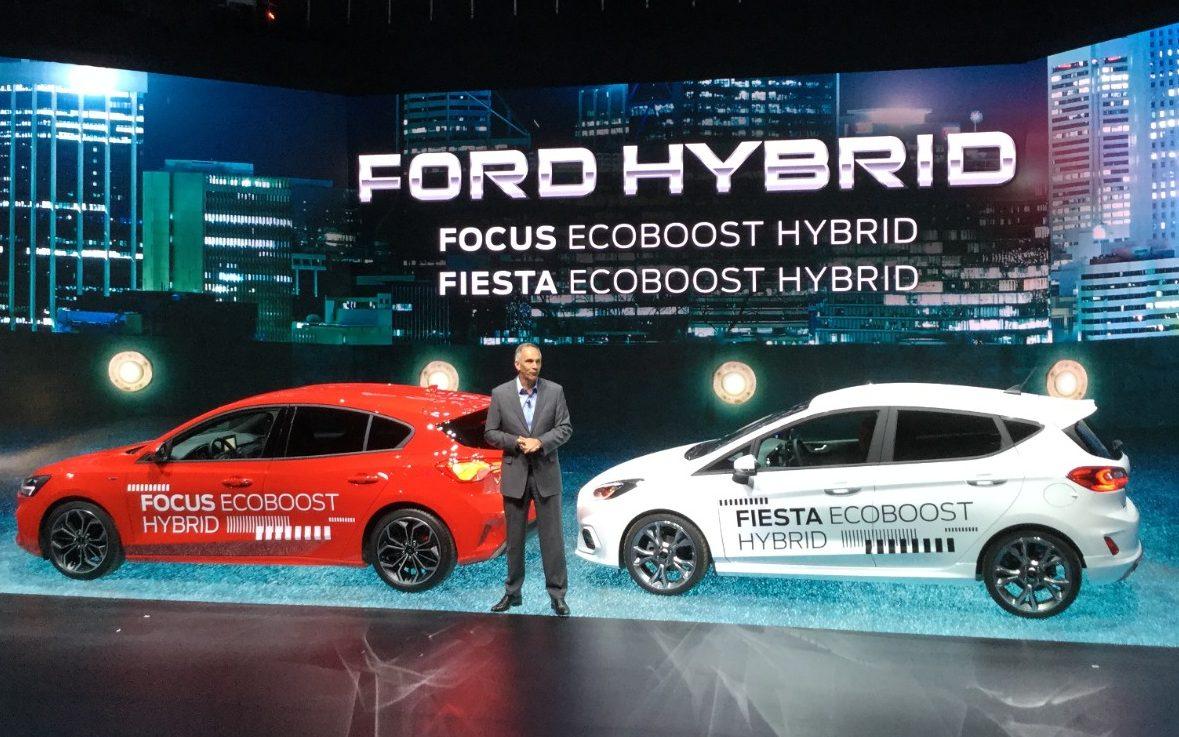It is a little late to the party, but Ford has finally announced a programme of electrification for its passenger cars and commercial vehicles, with 16 new electrified cars and CVs, eight of which are to be offered by the end of the year.
In 2020 there will also be what is described as a “Mustang-inspired” battery-electric vehicle (Ford’s first such vehicle), which will have a range of about 300 miles.
Steven Armstrong, Ford of Europe chairman, defends his company’s tardy arrival in the hybrid market, saying this move “marks a wave of innovation on a scale not seen since Henry Ford. We want to make sure we don’t just electrify the car but also the driving experience”.
Previously, Ford has said it won’t lose money introducing hybrid and electric cars, and Armstrong admits that the falling costs of the technology have helped drive this initiative, although Ford is also attempting to reduce costs in its loss-making European operations.
“In parallel with the launch of this electrification we are engaged in a process of redesigning and resetting the business in Europe,” he says. Ford has recently dropped slow-selling vehicles from its line-up including the C-Max multi-purpose vehicle and low-value Fiesta and Focus models.
Armstrong refused to be drawn on the future for its British operations, which include the diesel engine plant in Dagenham, Essex and the petrol engine plant at Bridgend in Wales. Insiders say that the company continues to monitor progress on the Brexit talks and will make decisions on those plants when the future is more clear.
Perhaps what has also sharpened the minds of the accountants at Ford is the prospect of fines levied by the European Union for missing forthcoming CO2 targets at a level of 95 Euros (currently 81.6 pence) per gram of CO2 per car.
For the immediate future, Ford will be introducing a variety of drivetrains including mild hybrid, self-charging hybrid and plug-in hybrid. These will include mild hybrid versions of the popular Fiesta and Focus hatchbacks, mild hybrid, plug-in hybrid and full battery-electric versions of the Transit van and a plug-in hybrid version of the Tourneo Transit Connect people mover.
At the heart of the electrification programme will be the new Kuga family SUV, which is expected in UK showrooms by early next year. This new SUV will be offered in mild, full and plug-in hybrid forms, which will help Ford meet the EU’s stringent new requirements.
The plug-in hybrid will go on sale at launch and has a 2.5-litre Atkinson Cycle four-cylinder petrol engine with an epicyclic hybrid drivetrain similar to that in the Toyota Prius, together with a 14.4kWh lithium-ion battery. It offers an EV driving range in the more realistic WLTP test of 31 miles with an anticipated fuel consumption of 235mpg in the admittedly highly unrealistic driving test cycle and CO2 emissions of 29g/km.
A similar arrangement will be used by the self-charging hybrid, but with a smaller battery. That model doesn’t go on sale until later next year. The mild hybrid consists of a beefed up starter/generator, which goes on the front of a 148bhp 2.0-litre diesel engine which gives anticipated CO2 emissions of 132g/km and a Combined fuel consumption of 56.5mpg.
Conventional engines will consist of two diesel units displacing 1.5 and 2.0 litres, as wella sa 1.5-litre petrol. There’s also a new eight-speed automatic transmission and all except the base-level cars will be offered with front- and all-wheel drive.
Europe’s SUV parc is about one third of all cars, but Ford’s SUV mix is just a fifth, so the company is playing catch-up in this market. The new Kuga is key to that growth; it is 44mm wider and 90mm longer than the outgoing model, but 20mm lower and based on a longer wheelbase. It shares its C2 chassis floorpan with the Focus and the US equivalent SUV the Escape, and the cabin is larger than the outgoing car's, with sliding rear seats to increase leg room at the expense of luggage space.
Despite being six years old in its current (second) generation, the Kuga is still a big seller in the UK. Last year Ford shifted 40,398 units in Britain, which made it the year’s ninth best-selling car ahead of the Kia Sportage, with the only other SUV in the top 10 being Nissan’s Qashqai, which came in fourth place with sales of 50,546.
Current-model Kuga prices start at £23075, so expect the new model to start at about £24,000.
For tips and advice, visit our Advice section, or sign up to our newsletter here
To talk all things motoring with the Telegraph Cars team join the Telegraph Motoring Club Facebook group here




